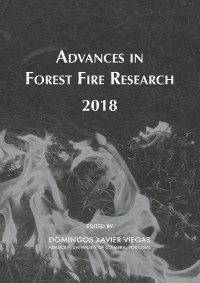Please use this identifier to cite or link to this item:
https://hdl.handle.net/10316.2/44656| Title: | Simulating the effectiveness of prescribed burning at altering wildfire behaviour in Tasmania | Authors: | Furlaud, J. M. Williamson, G. J. Bowman, D. M. J. S. |
Keywords: | prescribed burning;dry eucalypt forests;eucalypt forests;fire behaviour model;fire management;fire weather;fuel reduction;fuel treatment;leverage;sedgelands;temperate rainforests;wet eucalypt forests | Issue Date: | 2018 | Publisher: | Imprensa da Universidade de Coimbra | Journal: | http://hdl.handle.net/10316.2/44517 | Abstract: | Prescribed burning is a widely accepted wildfire hazard reduction technique; however, knowledge of its effectiveness remains limited. To address this, we employ simulations of a widely used fire behaviour model across the ecologically diverse Australian island state of Tasmania. We simulate three broad scenarios: (1) no fuel treatment, (2) a maximal treatment, with the most possible prescribed burning within ecological constraints, and (3) 12 hypothetically implementable state-wide prescribed-burning plans. In all simulations, we standardised fire-weather inputs to represent regionally typical dangerous fire-weather conditions. Statistical modelling showed that an unrealistically large maximal treatment scenario could reduce fire intensity in three flammable vegetation types, and reduce fire probability in almost every vegetation type. However, leverage analysis of the 12 more-realistic implementable plans indicated that such prescribed burning would have only a minimal effect, if any, on fire extent and that none of these prescribed-burning plans substantially reduced fire intensity. The study highlights that prescribed burning can theoretically mitigate wildfire, but that an unrealistically large area would need to be treated to affect fire behaviour across the island. Rather, optimisation of prescribed burning requires careful landscape design at the local scale. Such designs should be based on improved fire behaviour modelling, empirical measurement of fuels and analysis of actual wildfires. Simulation modelling showed that an unrealistically large-scale prescribed-burning program across Tasmania would be necessary to reduce wildfire extent and intensity under dangerous fire-weather conditions. By contrast, more feasible, but geographically constrained, broad-scale prescribed-burning plans had substantially reduced effects on area burnt and fire intensity. This study highlights the need for targeted localised fuel treatments rather than broad-scale prescribed burning. | URI: | https://hdl.handle.net/10316.2/44656 | ISBN: | 978-989-26-16-506 (PDF) | DOI: | 10.14195/978-989-26-16-506_139 | Rights: | open access |
| Appears in Collections: | Advances in forest fire research 2018 |
Files in This Item:
| File | Description | Size | Format | |
|---|---|---|---|---|
| simulating_the_effectiveness_of_prescribed_burning.pdf | 828.81 kB | Adobe PDF |  |
Items in DSpace are protected by copyright, with all rights reserved, unless otherwise indicated.
